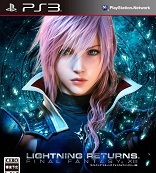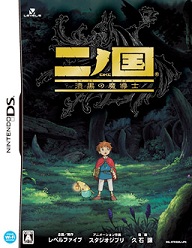Seiken Densetsu DS: Children of Mana (Import)
Nintendo DS
Reviewed: 09/03/2006
 Seiken Densetsu, or the Mana series, has been a longstanding group of colorful action RPGs. Three years after its last installment, the series moved onto a new platform with Seiken Densetsu DS: Children of Mana.
Seiken Densetsu, or the Mana series, has been a longstanding group of colorful action RPGs. Three years after its last installment, the series moved onto a new platform with Seiken Densetsu DS: Children of Mana.
Mana makes a smooth transition onto the DS. The top screen is where the gameplay and story scenes take place, with the bottom screen being used in good, non-forced-in ways, most notably as a map on which the player can get a look at the locations of enemies. The stylus is only used on rare occasions, for menu functions like changing equipment and rearranging different gems the character is wearing. There’s nothing wrong with that at all, as that is better than having to deal with tedious overuse of the touchscreen. On a related note, the game controls well enough. Each character equips two out of four possible weapons, each of which has two different functions (one used when tapping that weapons assigned button, another performed when holding it in).
Having good control is always nice, but especially so in fast-paced games such as this. Dungeons in Children of Mana are populated by droves and droves of enemies, which can and will come after the characters relentlessly. Seeing so many on-screen monsters might feel intimidating at first, but the player will eventually form proper strategies to deal with the different beasts; and of course, one will get more and more familiar with each of the weapons as time goes on. While it starts out hard, once the player figures things out, SDDS:CoM levels out to about an easy-medium difficulty. There are some tough moments in dungeons, but their end bosses tend to be toddler-level easy; some can even be finished in 30 seconds or less. A game in such a long-running series, with so many fans being experience veterens of earlier titles–certainly not newbies–deserve more intense boss battles than that. Masochists may want to do things like handicap themselves with bad equipment and lack of items, but people shouldn’t have to go to extra lengths to be challenged.
 |
| Do this next to a wall and they’ll all bounce back into you, then into a nearby barrel, then back into you… |
One thing that can get bothersome is how often enemies tend to pinball off of their surroundings and back into the character. Striking enemies with most weapons makes them bounce off various things in the area, and while it’s nice to see a way to cause bonus damage to the foes, they’ll often bounce back and forth four or five times and collide with the hero. It’s sometimes hard to avoid and can get minorly annoying. At least this is only one minor flaw in the face of otherwise fine controls and solid-feeling gameplay.
Dungeons consist of a series of floors, climbed by finding a mana egg and warp spot on each, until eventually fighting a boss. At any time, should the player desire to bail out of the dungeon, he can, simply by selecting this option from the menu, with no penalty and retaining all items and experience gained.
One of the newer and more interesting aspects to dungeons within the game is the amount of objects to interact with. Beyond the typical grass to cut, pots to break and barrels to push, players will encounter all kinds of creative new additions. Magical seals on floors will release powerful enemies when stepped on; tree roots will rise from holes in the ground to knock enemies and allies about; spiked blockades must be either slowly destroyed, or avoided by finding another way around or faking one out with a friend or two; discolored objects can be cut down to cause unpleasant status effects to surrounding bodies. To list them all would take up much unnecessary space, but these props vary from dungeon to dungeon and add some spice to break up the monotony of the atmosphere. Seeing how creative these props get as the game progresses, it’s a shame that no actual puzzles exist in the dungeon mechanics, because puzzles built around these objects could have really added flavor and challenge to each location.
 |
| Such pretty environments. |
A standout feature in SDDS:CoM is the ability to use the DS’ local wifi capabilities to join a game and play with up to four total people. Linking up and rocking the dungeons with friends in this game is all kinds of fun, and ensures players that this game will be seeing at least sporadic action for a long time after purchase. It is sad that only local settings can be used, as a fully online option would have made sure that there was almost always somoene to play with. At least there isn’t really any lag to speak of when playing only with local friends.
Children of Mana‘s story begins with one of the four characters the player selects–Flick, Tumble, Pop, or Wanderer–but the story does not appear to change no matter which character is chosen. Only dialogue and speech patterns are really altered. Sadly, the plot is clouded by quite a few clichés. Orphaned heroes: check. Dream sequence with lost parents: check. Stylish, mysterious and imperious villain, who speaks in a great deal of kanji: check. Magical forces running wild: check. Imminent destruction of the world: check. It’s all here, folks. Not many new concepts or twists really emerge, and the story isn’t presented in a terribly interesting fashion. The plot progresses in this fashion: a few lines of dialogue in the Mana Village set up the hero to head to their next location. After the player slogs through the dungeon, some brief scenes with little movement precede a boss fight, followed by more dialogue and a return to the village. There are no other towns to visit, no other locations except for dungeons, and the interest of the village is minimal. Sidequests by villagers offer no real character development, and involve backtracking to a previously visited location to fight through 4-10 randomly generated dungeon floors for a simple reward.
 |
| Few things are hotter than an anime chick about to shoot someone with a bow. |
Technical beauty is a strong presence in this game. Visuals are crisp and bright, and everything looks perfectly Mana in terms of art. It’s one of the best-looking games on the DS at this point. Short animated sequences and the character portraits are spiffy as well. One bizarre graphical oddity is that the game borrows some dungeon textures straight out of its eleven-year-old predecessor, Seiken Densetsu 3, with the colors altered to the sharper, brighter feel of Children of Mana.
As with other DS games, the music often translates a bit poorly to the small, tinny speakers. Sometimes, bass levels which can’t be heard on speakers alone create an irritating buzzing sound at low-to-mid-level volume, particularly in the village. Headphones yield only mediocre improvements to the listening experience. Lost bass notes and percussion magically appear once the DS’ speakers are disengaged, but said bass lines are flat, repetitive, and sometimes a bit invasive. Only a select few tracks improve with headphone use, but those that do are quite stunning, particularly the opening theme, which sounds more orchestrated than some of the dungeon themes, which sound rather MIDI. Still, the tunes are solid, and catchy, and most dungeon themes are built to stand the long minutes they’ll be playing. As for the sound effects, none are particularly outstanding, though all are passable, with the possible exception of some wind noises that remind one of bad TV static.
Seiken Densetsu DS: Children of Mana is a delight to play and an honor to the Seiken Densetsu series. Whether alone, or blessed enough to have friends that also own the game, it’s a fun, entertaining experience. It could surely stand some tougher bosses, injection of any puzzles whatsoever, and more character development/less cliched storytelling, but overall, the game deserves plenty of recognition. Its great visuals, fun gameplay, solid interface, and multiplayer function put it among the better handheld RPGs on the market today.
-Heath & Janelle Hindman
| Score Breakdown | ||
| Overall Very Good Out of 10 See our Review Criteria |
Gameplay | Great |
| Story | Bad | |
| Graphics | Great | |
| Sound/Music | Good | |
| Replay Value | Bad | |
| The Verdict: 7 | ||








